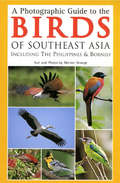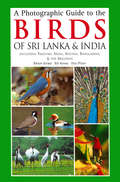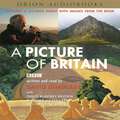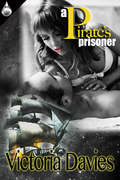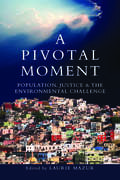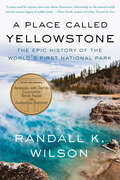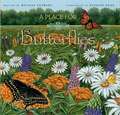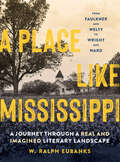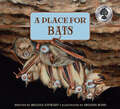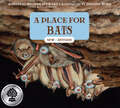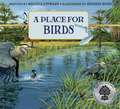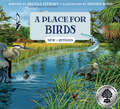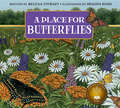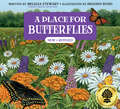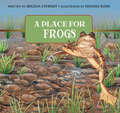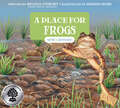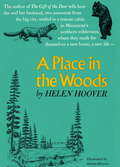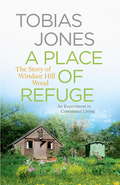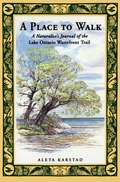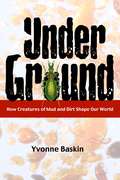- Table View
- List View
A Photographic Guide to the Birds of Southeast Asia
by Morten StrangePeriplus is proud to present the very first comprehensive photographic guide to the birds of mainland Southeast Asia, the Philippines and Borneo. Included are the birds of Peninsular Malaysia, Thailand and Indochina, as well as those found in South China, Hong Kong and Taiwan.This book covers 668 species and contains more than 700 color photographs. There is a distribution map for each species.Many of the photographs in this magnificent volume appear for the first time and have been carefully selected to show the most important species. The concise text provides vital information that will ensure accurate identification of species in one of the most diverse avifauna regions. Indispensable reading for all bird lovers.
A Photographic Guide to the Birds of Sri Lanka & India
by Bikram Grewal Bill Harvey Otto PfisterPeriplus is proud to present the first comprehensive guide to the birds of the Indian subcontinent.This book covers over 800 species and distinct sub-species and contains over 1,000 full-color photographs. Each species has a distribution mapMany of the photographs in this magnificent volume appear for the first time and have been carefully selected to show the most important features of the species illustrated. In several cases, different plumages or flight shots are included. The concise text provides vital information on the plumages, voice and habits of each species are also mentioned in the texts. The maps are accompanied by a note on the status and distribution. This book will enable accurate field identification in one of the world's most diverse avifaunal regions. Indispensable reading for all bird lovers.
A Picture Book of Flowers
by Theresa GraceLovely paintings of flowers and an accurate narrative. This small book could motivate children to become interested in the science of plants and the aesthetic value that plants provide.
A Picture Of Britain: n/a
by David DimblebyAccompanying a major BBC1 series presented by David Dimbleby, and an exhibition at Tate Britain, A Picture of Britain is a celebration of the British landscape and the art that it has inspired, from Constable to Lowry, from Turner to Nash. From the slopes of Snowdonia to the industrial Black Country, from the grandeur of the Scottish Highlands to the meadows of Suffolk, the British landscape has inspired artists and writers for generations. This remarkable book, read by all four contributors, captures our rich cultural heritage, creating for the listener A Picture of Britain.(p) 2006 Orion Publishing Group
A Pioneer Son at Sea: Fishing Tales of Old Florida
by Gilbert L. VossFlorida Historical Society Charlton Tebeau Award "An outstanding piece of Florida fishing history by one of the most famous marine biologists in Florida."--Gene Shinn, author of Bootstrap Geologist: My Life in Science "A perfect blend of history, science, and adventure. Allowing his natural storytelling talent to shine through, Voss tells of the waters, inlets, coves, and colorful characters that comprised South Florida in the early twentieth century."--Janet DeVries, author of Pioneering Palm Beach: The Deweys and the South Florida Frontier "A vivid picture of Voss's early years as a fisherman and outdoorsman prior to his illustrious career as a marine scientist and educator, who passed along volumes of knowledge about the marine environment and its inhabitants to the scientific community."--Tommy Thompson, author of The Saltwater Angler's Guide to Tampa Bay and Southwest Florida "A priceless memoir and a spectacular adventure."--Terry Howard, author of High Seas Wranglers: The Lives of Atlantic Fishing Captains Long before tourism dominated Florida’s coastline, the state was home to dozens of commercial fisheries and ethnically diverse communities of rugged individuals who made their living from the sea. In A Pioneer Son at Sea, Gilbert Voss, a celebrated marine biologist, recounts his early days of fishing on both coasts of the peninsula during the Great Depression and World War II. Here are vanished scenes from old Florida, almost unimaginable to modern residents of the state: gill-netting for mackerel off Jupiter, the early days of charterboat fishing for sailfish out of Stuart and Boynton, the snapper fleet at Carrabelle, sponge-diving at Tarpon Springs, the oyster fishery at Crystal River, and mullet fishing from airboats at Flamingo. Oversized personalities inhabit these pages, including Voss's brothers, who were themselves seminal figures in the early days of Florida big-game fishing. Voss's anecdotes feature Crackers, rum runners, murderers, Conchs, wealthy industrialists, now-legendary charterboatmen, Greek spongers, and Cuban vivero captains. These stories are not just spirited portraits of fishermen from a bygone era, they are also remarkable tales of the formative years in the life of a scientist and conservationist who later worked tirelessly to preserve our dwindling marine resources.
A Pirate's Prisoner
by Victoria DaviesAction, adventure, and romance on the high seas. Captain Natalie finally has her old nemesis at her mercy. After all, he's chained to her headboard! But just as things are heating up, the tables are turned and she and Captain Reece must learn to trust each other or lose everything to a mutual enemy.Being a pirate is a dangerous trade but the rewards outweigh the risks. Or so Captain Natalie believes when she captures her nemesis, the privateer Captain Reece. Bound and at her mercy, Natalie thinks she's finally taken the upper hand in the duel with her seductive enemy. After all, there is no denying Reece makes an excellent addition to her bed, especially chained to her headboard.When Reece turns the tables on her, Natalie discovers the cost of her gamble. She struggles to stand strong as Reece seeks to take his vengeance in the most pleasurable of ways. But even pirates have hearts and despite her best efforts, Reece is quickly stealing hers.Their games come to an end, however, when an enemy ship is sighted. Natalie must convince Reece to trust her with the command of their ship and his refusal could cost more than just a broken heart. It could mean all their lives.
A Pivotal Moment: Population, Justice, and the Environmental Challenge
by Tim Wirth Laurie Ann Mazur Martha Farnsworth Riche Susan Gibbs Steve Sinding Tim CohenThrough a series of essays by leading demographers, environmentalists and reproductive health advocates, A Pivotal Moment offers a new perspective on the complex connection between population dynamics and environmental quality. It presents the latest research on the relationship between population growth and climate change, ecosystem health and other environmental issues. It surveys the new demographic landscape--in which population growth rates have fallen, but human numbers continue to increase. It looks back at the lessons learned from half a century of population policy--and forward to proposetwenty-first century population policies that are sustainable and just.A Pivotal Moment puts forth the concept of "population justice," which is inspired by reproductive justice and environmental justice movements. Population justice holds that inequality is a root cause of both rapid population growth and environmental degradation. As the authors in this volume explain, to slow population growth and build a sustainable future, women and men need access to voluntary family planning and other reproductive health services. They need education and employment opportunities, especially for women. Population justice means tackling the deep inequities--both gender and economic--that are associated with rapid population growth and unsustainable resource consumption. Where family planning is available, where couples are confident their children will survive, where girls go to school, where young men and women have economic opportunity--there couples will have healthier and smaller families.
A Place Beyond: Finding Home in Arctic Alaska
by Nick JansNick Jans leads us into his "found" home--the Eskimo village of Ambler, Alaska, and the vast wilderness around it. In his powerful essays, the rhythms of daily arctic life blend with high adventure--camping among the wolves, traveling with Inupiat hunters, witnessing the Kobuk River at spring breakup. The poignancy of a village funeral comes to life, hordes of mosquitoes whine against a tent, a grizzly stands etched against the snow--just a sampling of the images and events rendered in Jans' transparent, visual prose. Moments of humor are offset by haunting insights, and by thoughtful reflections on contemporary Inupiaq culture, making A Place Beyond a book to read and enjoy.
A Place Called Yellowstone: The Epic History of the World’s First National Park
by Randall K. WilsonWINNER OF THE BARBARA AND DAVID ZALAZNICK BOOK PRIZEFinalist for the High Plains International Book Award INSIDE YELLOWSTONE NATIONAL PARK: Discover the epic history of the first US national park in this historical adventure for fans of American history, the Wild West, and the hit show Explore how Yellowstone&’s remote Western landscape became a symbol of our country—and an integral part of our understanding of the natural world.It has been called Wonderland, America&’s Serengeti, the crown jewel of the National Park System, and America&’s best idea. But how did this faraway landscape evolve into one of the most recognizable places in the world? As the birthplace of the national park system, Yellowstone witnessed the first-ever attempt to protect wildlife, to restore endangered species, and to develop a new industry centered on nature tourism.Yellowstone remains a national icon, one of the few entities capable of bridging ideological divides in the United States. Yet the park&’s history is also filled with episodes of conflict and exclusion, setting precedents for Native American land dispossession, land rights disputes, and prolonged tensions between commercialism and environmental conservation. Yellowstone&’s legacies are both celebratory and problematic. A Place Called Yellowstone tells the comprehensive story of Yellowstone National Park as the story of the nation itself.
A Place For Butterflies
by Melissa Stewart Higgins BondDirections for creating backyard gardens and planting specific trees that attract butterflies are also included. Author Melissa Stewart offers children a glimpse into the interconnectedness of our world and how the actions of one species can inadvertently harm another
A Place Like Mississippi: A Journey Through a Real and Imagined Literary Landscape
by W. Ralph Eubanks&“This is the book all of us Mississippi writers, dead and alive, need to read. It is indeed a strange but glorious sensation to see your literary and geographic lineage so beautifully and rigorously explored and valued as it's still being created.&” —Kiese Laymon, author of Heavy: An American MemoirIn A Place Like Mississippi, award-winning author and Mississippi native W. Ralph Eubanks treats us to a literary tour of the evocative landscapes that have inspired writers in every era. From Faulkner to Wright, Welty to Trethewey, Mississippi has been both a backdrop and a central character in some of the most compelling prose and poetry of modern literature.The journey unfolds on a winding path, touching the muddy Delta, the rolling Hill Country, down to the Gulf Coast, and all points between. In every corner of the state lie the settings that informed hundreds of iconic works.Immersing us in these spaces, Eubanks helps us understand that Mississippi is not only a state but a state of mind. Or as Faulkner is said to have observed, &“To understand the world, you must first understand a place like Mississippi.&”
A Place for Bats (A Place For. . . #5)
by Melissa StewartDid you know that almost a third of the world's 1,300 species of bats are in serious trouble?Chased from their caves and forests, sickened by cave-dwelling fungi, and swept from the skies by wind turbines, bats have no place to hide. And human actions often contribute to the problems. How can we help ensure that there will be a safe place for bats?In simple yet compelling language, acclaimed science writer Melissa Stewart showcases twelve types of North American bats, from the familiar little brown bat to the Mexican free-tailed bat. Her clear narrative shows the threats these bats face, and informative sidebars describe a variety of efforts to save them.In addition, remarkable full-color illustrations vividly and accurately depict bats within the ecosystems that support their survival. Range maps and additional bat facts are also included.This nonfiction picture book is part of a prize-winning series designed to inform young readers about a wide range of environmental issues and to present ways people can help protect animals and their natural habitats. A classroom favorite, this book is perfect for budding scientists, environmentalists, and nature lovers.
A Place for Bats (A Place For. . . #5)
by Melissa StewartDid you know that almost a third of the world&’s 1,300 species of bats are in serious trouble?The latest, updated edition of a teacher and classroom favorite with two brand new illustrations and spotlights on vanishing species and how we can help. Perfect for budding scientists, environmentalists, and nature lovers.Chased from their caves and forests, sickened by cave-dwelling fungi, and swept from the skies by wind turbines, bats have no place to hide. And human actions often contribute to the problems. How can we help ensure that there will be a safe place for bats?In simple yet compelling language, acclaimed science writer Melissa Stewart showcases twelve types of North American bats, from the familiar little brown bat to the Mexican free-tailed bat. Her clear narrative shows the threats these bats face, and updated informative sidebars describe a variety of efforts to save them. In addition, remarkable full-color illustrations vividly and accurately depict bats within the ecosystems that support their survival. Range maps and additional bat facts are also included.This newly updated nonfiction picture book is part of a prize-winning series designed to inform young readers about a wide range of environmental issues and to present ways people can help protect animals and their natural habitats.
A Place for Birds (A Place For. . . #2)
by Melissa StewartNorth America has almost three billion fewer birds now than it had fifty years ago. It may be hard to believe, but birds are in danger, and they are calling for our help. Sadly, humans are often the source of the harm! What can we do to help save them?In simple yet compelling language, Melissa Stewart showcases twelve North American birds, from the familiar eastern bluebird to the rare Kirtland's warbler. Her clear narrative shows the threats these birds face, and informative sidebars describe a wide variety of efforts to save them. In addition, remarkable full-color illustrations vividly and accurately depict the birds within the ecosystems that support their survival. Range maps and additional bird facts are also included.This nonfiction picture book is part of the prize-winning A Place for... series designed to inform young readers about a wide range of environmental issues and to present ways people can help protect animals and their natural habitats. An ideal choice for young birders, scientists, environmentalists, and nature lovers.
A Place for Birds (A Place For. . . #2)
by Melissa StewartThe latest updated edition of this fact-filled, colorful look at the amazing world of birds includes two brand new illustrations and a call to action to protect these beautiful creatures.In simple yet informative language, A Place for Birds introduces young readers to the ways human action or inaction can affect bird populations and opens kids&’ minds to a wide range of environmental issues. Describing various examples, the text provides an intriguing look at birds, at the ecosystems that support their survival, and at the efforts of some people to save them. At the end of the book, the author offers readers a list of things they can do to help protect these special creatures in their own communities.
A Place for Butterflies (A Place For. . . #1)
by Melissa StewartOnce abundant monarch butterflies are disappearing in the United States, but that's only part of the story. Many other butterfly species are also in trouble, and human action is often the cause of their plight. What can we do to help protect this important insect?In clear and compelling language, Melissa Stewart showcases twelve North American butterflies—from the familiar eastern tiger swallowtail to the rare Palos Verdes blue butterfly—and the ecosystems that support their survival. The simple narrative states the dangers that each of these butterfly populations face, and informative sidebars describe the efforts of people to save them. Featuring glorious full-color illustrations by Higgins Bond and range maps for each butterfly, this book is perfect for aspiring entomologists and conservationists. This nonfiction picture book is one of the six titles in the prize-winning A Place for... series, a collection that opens readers' minds to a wide range of environmental issues and shows how humans are striving to protect animals and their natural habitats.
A Place for Butterflies (A Place For. . . #1)
by Melissa StewartThe latest updated edition of this fact-filled, colorful look at the amazing world of butterflies, which includes two brand new illustrations and a call to action to protect these creatures and their habitats.In simple yet informative language, A Place for Butterflies introduces young readers to the basic facts about butterflies, including how they transform from caterpillars to butterflies, where they live, what they eat, and how they benefit plants and animals. Sidebars throughout the book contain information about how human action has harmed butterflies in the past, and the many ways people can protect certain butterfly populations, like by preserving forests and meadows and cutting down on pesticide use. Also included are pointers on how readers can help butterflies in their own neighborhood.
A Place for Frogs (A Place For. . . #3)
by Melissa StewartThe population of frogs in the United States has been declining for the past fifty years, even in our protected national parks. What dangers do frogs face? How can we help?In simple yet engaging language, acclaimed science writer Melissa Stewart showcases twelve types of North American frogs, from the wood frog to the now rare Oregon spotted frog. Her clear narrative shows the threats these frogs face, and informative sidebars describe a wide variety of efforts to save them. In addition, remarkable full-color illustrations vividly and accurately depict the frogs within the ecosystems that support their survival. This nonfiction picture book is part of a prize-winning series designed to inform young readers about a wide range of environmental issues and to present ways people can help protect animals and their natural habitats.
A Place for Frogs (A Place For. . . #3)
by Melissa StewartThe latest updated edition of this fact-filled, colorful look at the amazing world of frogs includes two brand new illustrations and a call to action to protect these beautiful creatures.In simple yet engaging language, acclaimed science writer Melissa Stewart showcases twelve types of North American frogs, from the wood frog to the now rare Oregon spotted frog. Her clear narrative shows the threats these frogs face, and updated, informative sidebars describe a wide variety of efforts to save them. In addition, remarkable full-color illustrations vividly and accurately depict the frogs within the ecosystems that support their survival.This nonfiction picture book is part of a prize-winning series designed to inform young readers about a wide range of environmental issues and to present ways people can help protect animals and their natural habitats.
A Place in the Woods
by Helen HooverHelen Hoover and her husband, Adrian, were trailblazers in the American back-to-the-land movement. Well ensconced in their professional lives in Chicago, they made the decision to follow their dream of a simple existence, pulling up their stakes and plunging into the wilds of northern Minnesota. A Place in the Woods, first published in 1969, describes how the Hoovers gradually adapted to the rigors of wilderness survival. This book relates events that occurred prior to those Hoover writes about in her bestselling Gift of the Deer. This is a tale of starting out, of the pitfalls of beginning a new life-one punctuated by near disasters but also by moments of rare beauty.
A Place of Refuge: An Experiment in Communal Living – The Story of Windsor Hill Wood
by Tobias JonesFive years ago, Tobias Jones and his wife set up a woodland sanctuary for people in a period of crisis in their lives. Windsor Hill Wood quickly becomes a well-known refuge, and a family home is transformed into a small community. Most people arrive because of a desperate need - bereavement, depression, addiction or homelessness - while others come simply because they are dismayed by modern life. A Place of Refuge is the story of an evolving community: the characters and conflicts, the miracles and mistakes. As the seasons turn in the bustling woodland, an ever-changing group of people try to share their money, their meals and ideals; making furniture, growing vegetables and rearing livestock. Encountering both violent antagonism and astounding generosity, the family open up not only their house, but also themselves, to the most demanding of judgements and transformations. This book is not about a retreat from the world, but about a deeper engagement with it. Living alongside troubled guests, Jones examines the consequences of our way of life - seeing up close the scars of war, abuse and loneliness - and contemplates the ways in which nature and stillness offer solace to those in torment.
A Place of Refuge: An Experiment in Communal Living – The Story of Windsor Hill Wood
by Tobias JonesFive years ago, Tobias Jones and his wife set up a woodland sanctuary for people in a period of crisis in their lives. Windsor Hill Wood quickly becomes a well-known refuge, and a family home is transformed into a small community. Most people arrive because of a desperate need - bereavement, depression, addiction or homelessness - while others come simply because they are dismayed by modern life.A Place of Refuge is the story of an evolving community: the characters and conflicts, the miracles and mistakes. As the seasons turn in the bustling woodland, an ever-changing group of people try to share their money, their meals and ideals; making furniture, growing vegetables and rearing livestock. Encountering both violent antagonism and astounding generosity, the family open up not only their house, but also themselves, to the most demanding of judgements and transformations. This book is not about a retreat from the world, but about a deeper engagement with it. Living alongside troubled guests, Jones examines the consequences of our way of life - seeing up close the scars of war, abuse and loneliness - and contemplates the ways in which nature and stillness offer solace to those in torment.
A Place to Walk: A Naturalist's Journal of the Lake Ontario Waterfront Trail
by Aleta KarstadWhat do experienced field naturalists discover when they explore the heavily populated Lake Ontario shoreline as if they were surveying a wilderness for the first time? In this beautifully illustrated book, Aleta Karstad takes you on a journey of discovery along the route of the Lake Ontario Waterfront Trail. Listening for calling frogs in spring, turning stones, sampling shoreline drift, identifying plants and animals, Karstad and her husband, herpetologist Frederick W. Schueler, discover a wealth of natural life, sometimes in unexpected places. The expedition journal, illustrated by Aleta Karstad’s elegant drawings and delicate watercolours, takes up where popular field guides leave off. It is a guide and inspiration for readers to explore their own region with fresh eyes, with an invitation to assist in monitoring animal communities.
A Plague of Rats and Rubbervines: The Growing Threat Of Species Invasions
by Yvonne BaskinThe human love of novelty and desire to make one place look like another, coupled with massive increases in global trade and transport, are creating a growing economic and ecological threat. The same forces that are rapidly "McDonaldizing" the world's diverse cultures are also driving us toward an era of monotonous, weedy, and uniformly impoverished landscapes. Unique plant and animal communities are slowly succumbing to the world's "rats and rubbervines"--animals like zebra mussels and feral pigs, and plants like kudzu and water hyacinth--that, once moved into new territory, can disrupt human enterprise and well-being as well as native habitats and biodiversity. From songbird-eating snakes in Guam to cheatgrass in the Great Plains, "invasives" are wreaking havoc around the world. In A Plague of Rats and Rubbervines, Yvonne Baskin draws on extensive research to provide an engaging and authoritative overview of this problem. She takes the reader on a worldwide tour of grasslands, gardens, waterways, and forests, describing the troubles caused by exotic organisms that run amok in new settings and examining how commerce and travel on an increasingly connected planet are exacerbating this oldest of human-created problems. She offers potential solutions and profiles individuals worldwide who are working tirelessly to protect the places and creatures they love. While our attention is quick to focus on purposeful attempts to disrupt our lives and economies by releasing harmful biological agents, we often ignore equally serious but much more insidious threats, those that we inadvertently cause by our own seemingly harmless actions. A Plague of Rats and Rubbervines takes a compelling look at this underappreciated problem and sets forth positive suggestions for what we as consumers, gardeners, travelers, nurserymen, fishermen, pet owners, businesspeople--indeed all of us who by our local choices drive global commerce--can do to help."
A Plague of Sheep
by Elinor G. K. MelvilleThis is a book about the biological conquest of the New World. Taking as a case study the sixteenth-century history of a region of highland central Mexico, it shows how the environmental and social changes brought about by the introduction of Old World species aided European expansion. The book spells out in detail the environmental changes associated with the introduction of Old World grazing animals into New World ecosystems, demonstrates how these changes enabled the Spanish takeover of land, and explains how environmental changes shaped the colonial societies.
